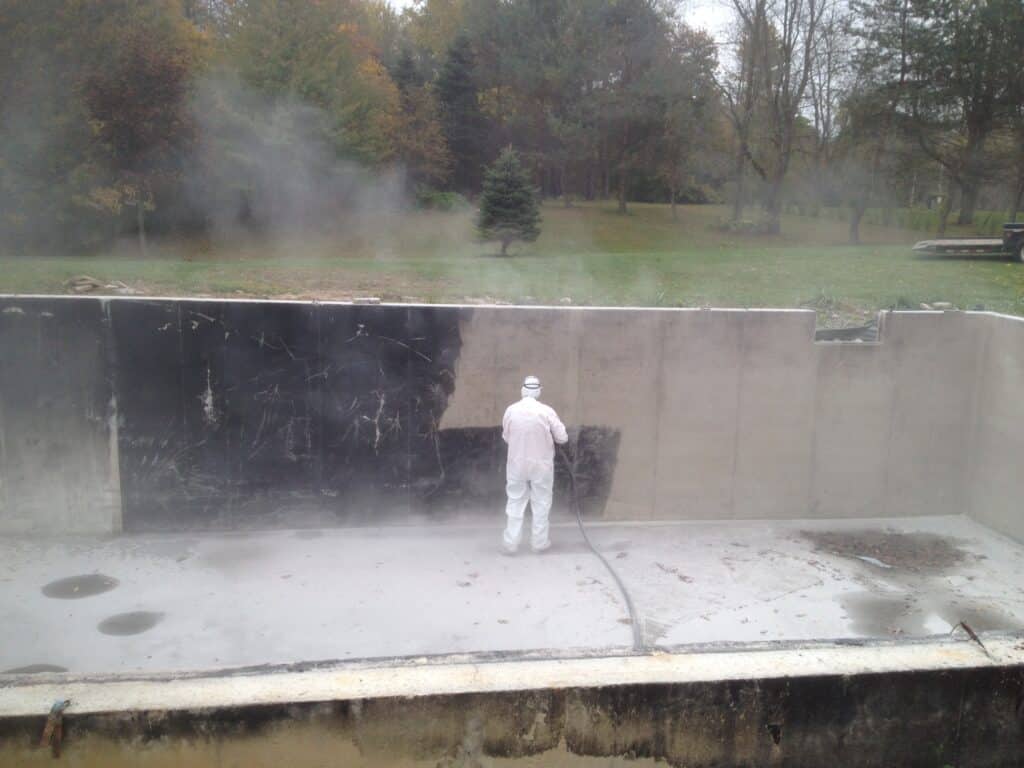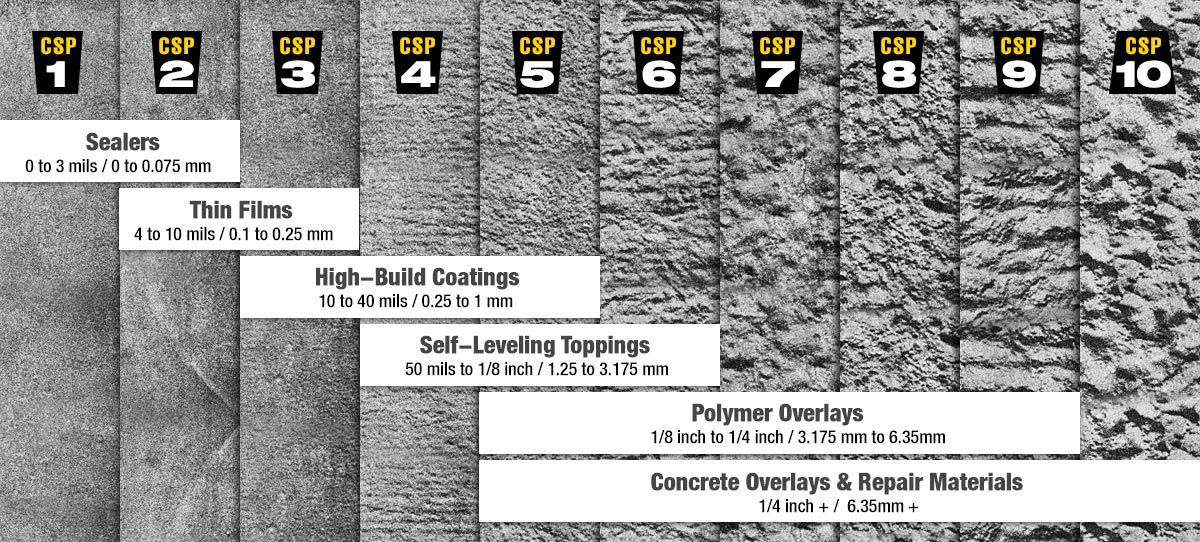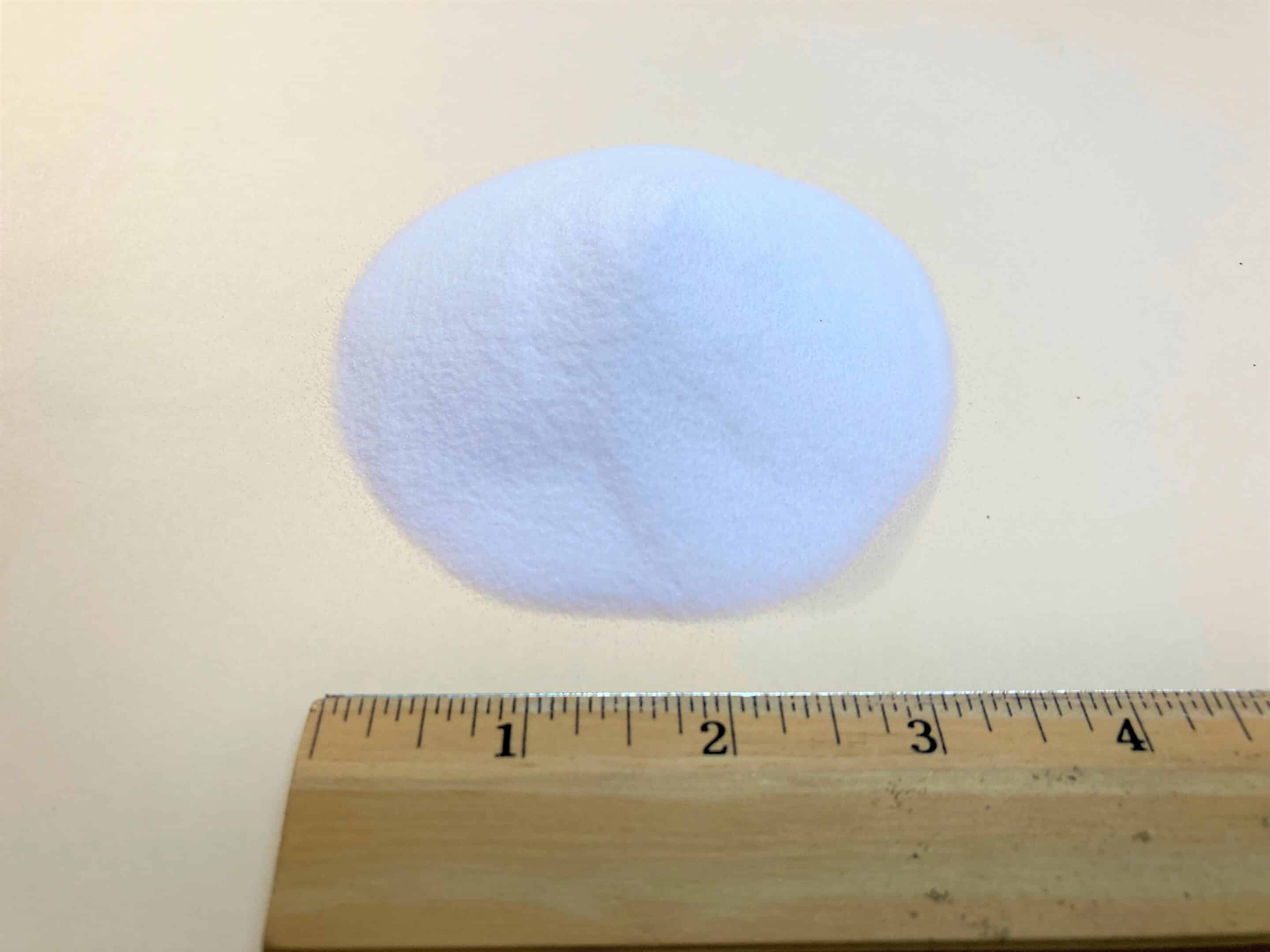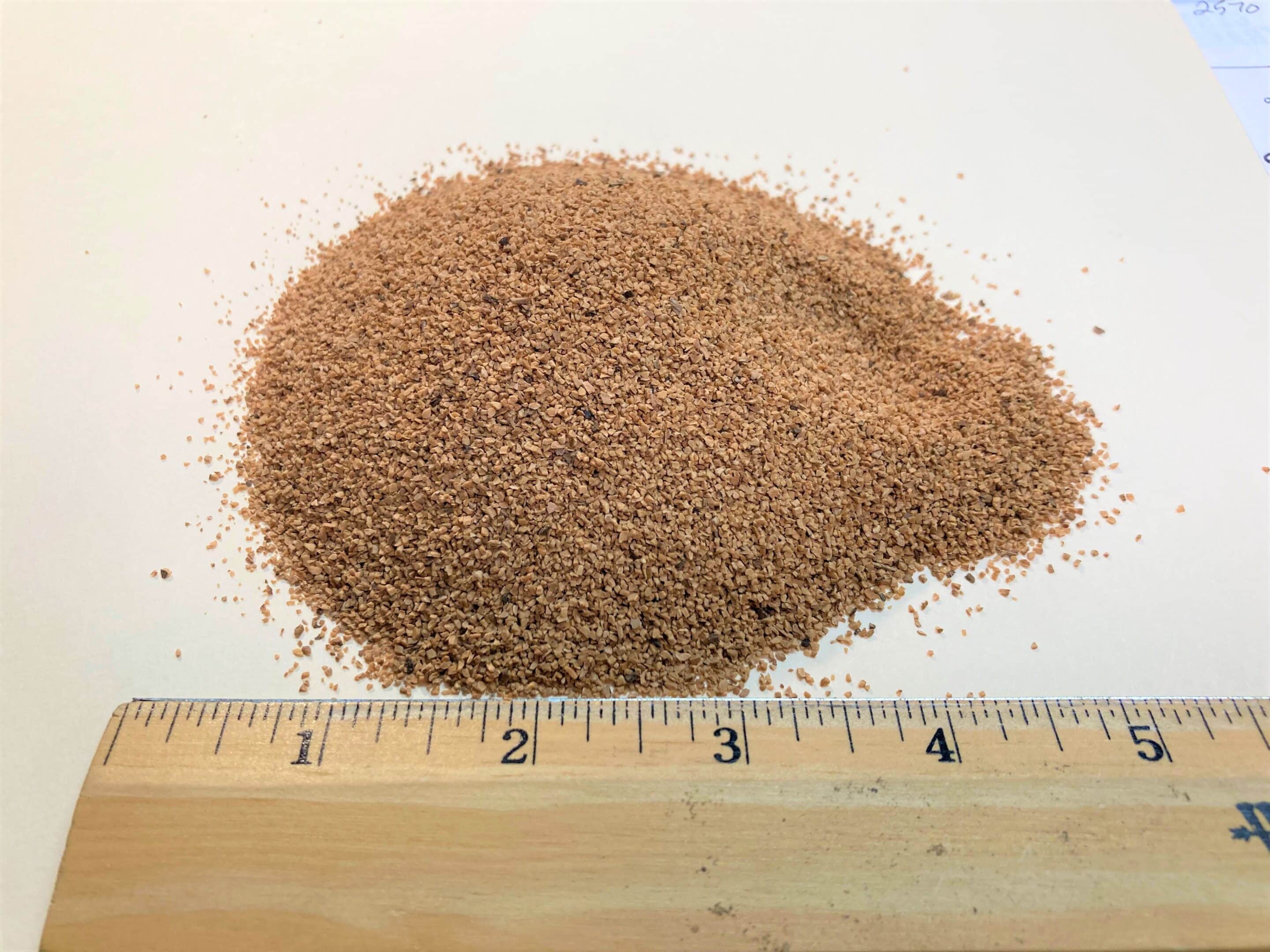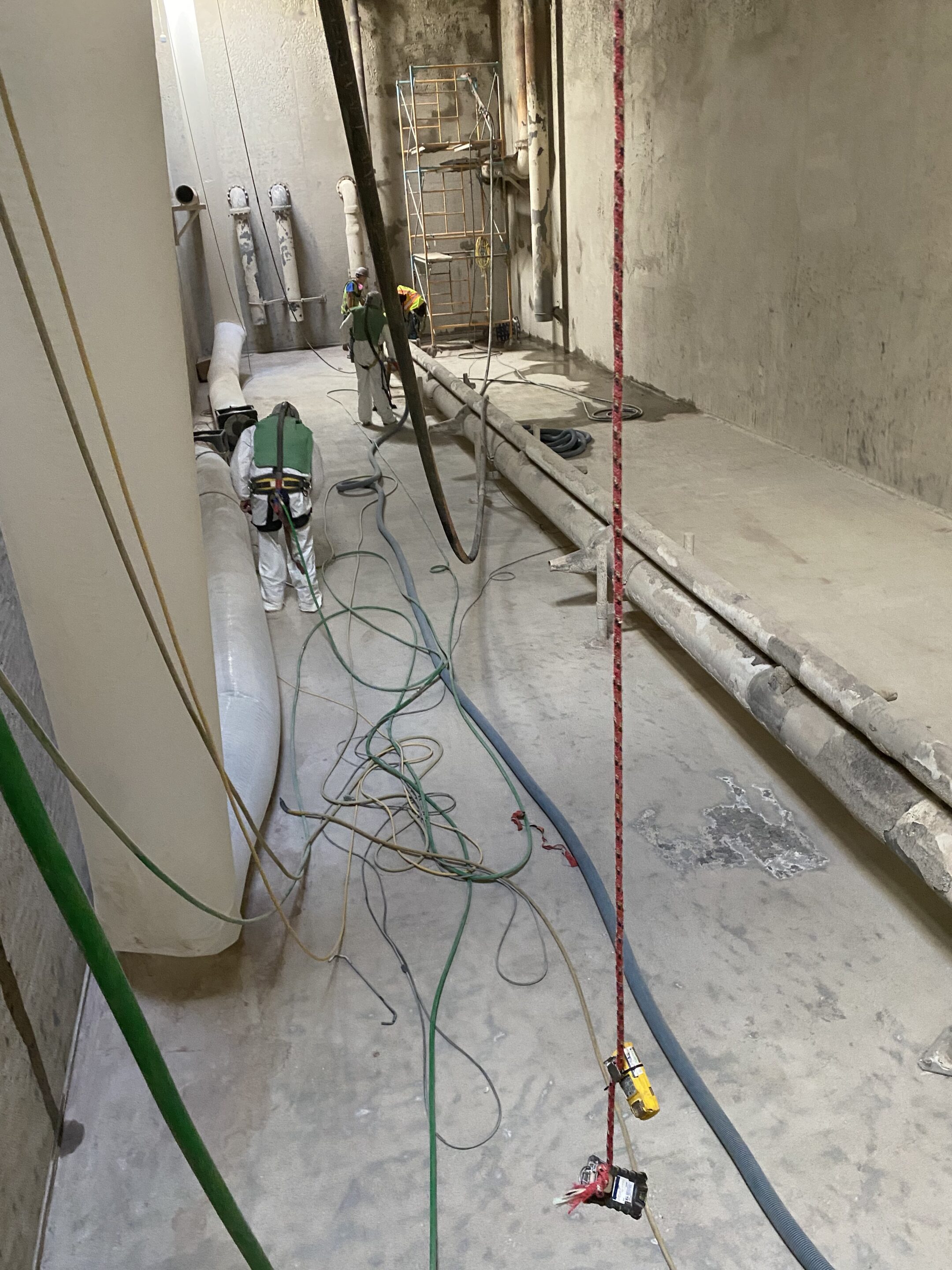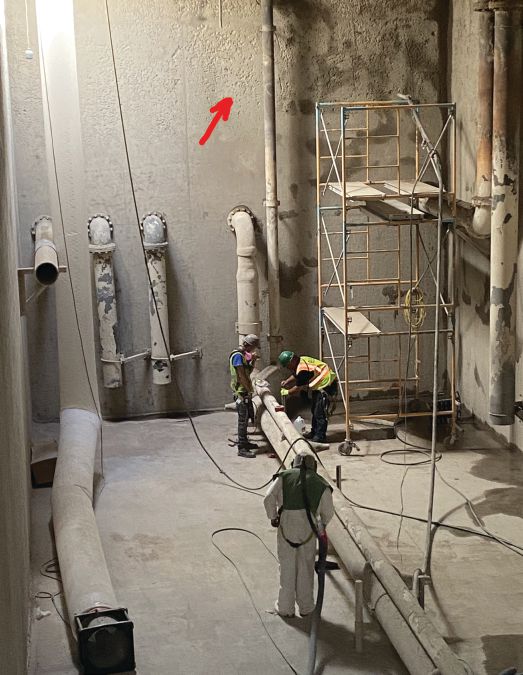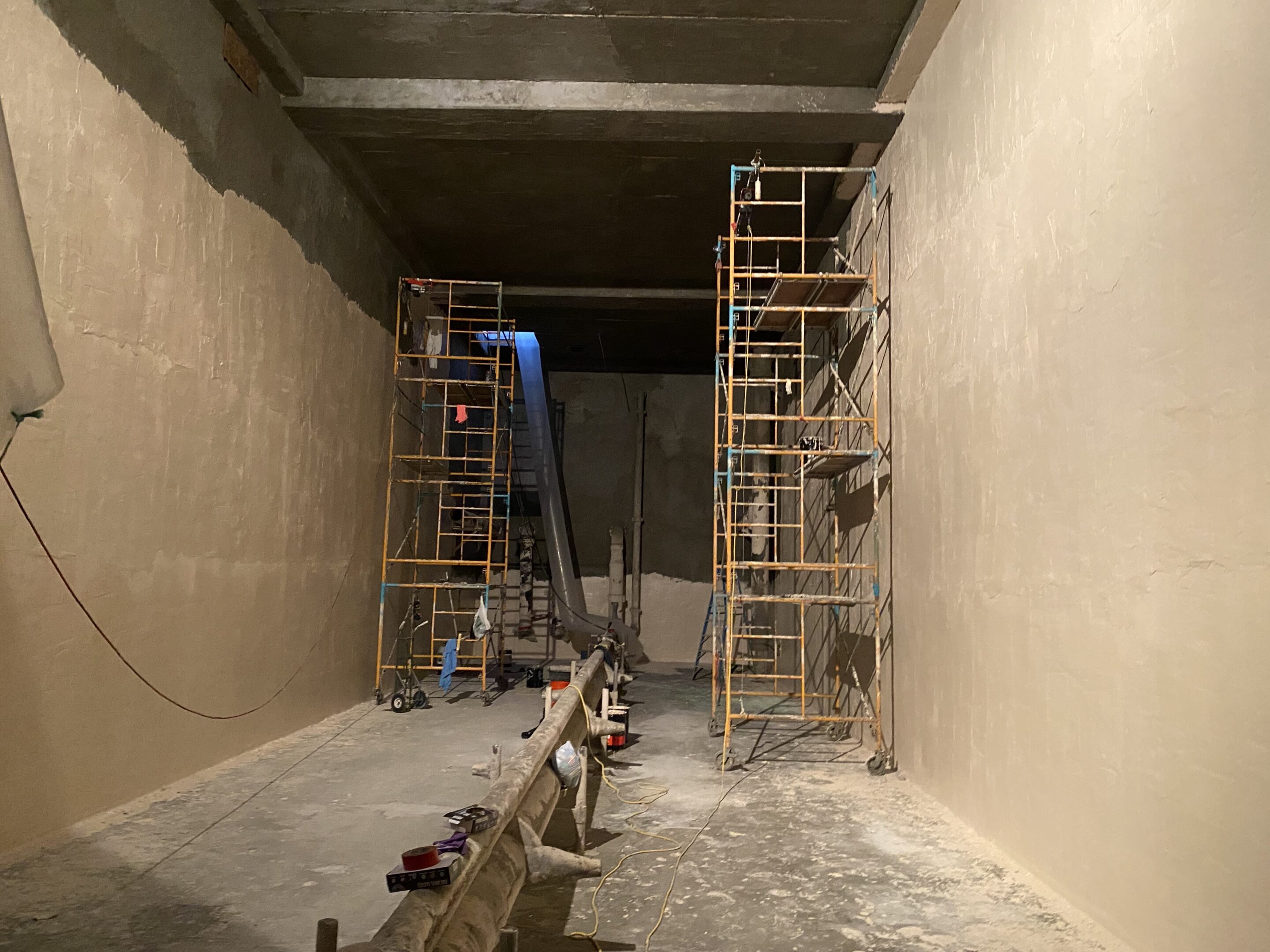Surface restoration for concrete structures often means applying coatings to rebuild and protect the deteriorated surface. Theses coatings range from sealants to overlays. There are some marvelous products on the market that perform a variety of restoration roles, including sealing, rebuilding, and resurfacing. The ultimate performance of these coatings, however, is greatly influenced by proper surface preparation.
In many cases, such as simple smoke damage from a fire, surface cleaning is all that’s required for restoration. Many sealants can be applied directly onto the newly cleaned surface without regard to the actual surface profile. Fire restoration methods including pressure washing, soda blasting and hand cleaning leave the surface roughness in a like-new condition with little change, if any, to the surface profile (fig. 1).
Many of the more advanced materials for concrete restoration (such as epoxies, polymers overlays, various mortars, and specialty coatings) require more vigorous profiling of the concrete to properly prepare the surface to accept the product. The “profile” of the surface refers directly to the roughness. This attribute is generally measured from the deepest “valley” on the surface to the highest “peak”. This roughness is expressed by a scale called the Concrete Surface Profile (CSP) as described and illustrated in ICRI 310.2R. This is a standardized measure of surface roughness that assigns a number – CSP 1 through CSP10 – for roughness as low as 0-3 mils to over ¼”. (fig.2)
Measuring this roughness can be done with numerous devices – some complicated and technical (such as lasers, pull-off adhesion tests), some more easily applied (such as replica tape and putty). One of the most common, and simple methods is the use of rubber comparator chips provided by ICRI. (fig. 3)) These rubber chips have a molded surface that replicates the surfaces of concrete of various profiles from CSP1 to CSP10. On restoration jobs the chips can be compared to the actual concrete surface to confirm that the required surface roughness has been achieved.
As mentioned, some degree of surface roughness is required for most of the quality products for restoring concrete surfaces. Imparting this roughness can be accomplished in a number of ways including: acid etching, grinding, needle scaling, abrasive blasting, and water jetting – to name a few. Of these, the most adaptable and effective methods is abrasive blasting. This is what many refer to as “sand” blasting. Due to the health issues associated with silica sand, however, actual “sand” blasting is nearly extinct. Abrasive media blasting, on the other hand, is very much alive and extremely adaptable.
Blasting media are available for many different applications. Soft abrasives like baking soda, dry ice, and walnut shells are capable of cleaning applications and coatings that don’t require more than a CSP1. (Fig. 4 and 5) Soft abrasives have little impact on the surface, imparting little surface roughness. Harder abrasives like calcium carbonate, crushed glass, garnet, and others have the ability to remove surface material leaving a profile, or roughness. Different results can also be achieved by varying the grit size of the blast abrasive. Beyond media, abrasive blasting can also adapt to provide different profiles by increasing (or decreasing) blast pressure, or even applying different nozzle technologies. (fig. 6) It generally true that blasting can provide CSP measurements from CSP1 to CSP9, depending on the combination of these – and a few other – important variables.
One of these important variables is the use of water in a wet abrasive blasting application. Commonly referred to as vapor blasting, wet abrasive blasting has multiple benefits including the descriptor – dustless. (fig. 7) While no blasting process is truly dust-free, this new development allows contractors to perform “open” blasting (not using containment) with little to no dust migrating beyond the worksite. Outdoor applications can obviously benefit from this lower dust level. Consider that a low dust application might even allow the blasting to move into areas previously inaccessible to more dusty dry blasting techniques. Newer rigs are less troublesome than in the past, more portable and very effective. (fig. 8)
One of the best ways to look at this is through a brief case study. A large pharmaceutical company in southwest Michigan was concerned with premature aging and deterioration in one of its concrete equalizer tanks in their private wastewater system. The large concrete tank, approximately 8,000 square feet (743 sq.m.)of concrete surface inside, was coated with 40-50 mils (1 – 1.3 mm) of an outdated and failing coal tar coating. There was also little evidence of proper surface preparation under this coating, another possible reason for the problems. This proved to be inadequate protection, in particular in the “headspace” of the tank where accumulations of corrosive Hydrogen Sulfide gas was significantly corroding the walls. (fig. 9)
Concerned with the high cost of replacing the tank, the owner looked into having the current concrete tank restored. Adding to this decision was a very real concern over a loss of production due to down-time during a possible replacement. They wisely reached out to an experienced restoration contractor, Blastek, LLC in Shelbyville, MI. It was clear to Eric Waddell, Partner and co-owner of Blastek, that properly restoring the tank would ultimately provide the customer with a significant cost savings over replacement. He added that the increased asset longevity (longer tank life) would further justify the cost of restoration. Other options such as steel and fiberglass had significant drawbacks, such as cost, availability, and downtime during the replacement process, when compared to the restoration project. Waddell explained that that the process of restoration would take about 2 weeks to complete, one week for surface preparation, and one week for application of the protective layers.
The process of restoring the tank would be a multi-step method employing a series of products including a mortar compound, cementitious epoxy, and 100% solid epoxy from a well-known manufacturer of concrete restoration compounds. The manufacturer recommended that Blastek profile the concrete in the tank to a CSP-5 level in accordance with ICRI 310.2R. They chose to use abrasive media blasting with a hard abrasive,80 Grit Garnet, at a high blast pressure to achieve the nearly 50 mils of profile required for proper surface preparation. (fig. 10) This was a confined space application and you can note the proper PPE and gas monitors clearly seen in the area when the blasting and coating processes took place. (fig. 11The CSP-5 finish could easily be confirmed when compared to the comparator chips on the job site. After blasting, the contractor repaired any cracks or pits greater than ¼” (6.4 mm) with a polyurethane material. This was followed by a mortar compound, sprayed on and then hand troweled, primarily to resurface, filling any remaining holes and deterioration of the surface. The next step was to apply, via hand troweling, a cementitious epoxy to a thickness of about 125 mils (1/8”, 3 mm) (fig. 12) The final step in the restoration was to apply a glaze, or 100% solid epoxy coating via an airless spray system.
The pharmaceutical manufacturer was thrilled with the results, and the promise of an equalizer tank that would offer many more years of servicewith very little down-time at a fraction of the cost of replacement. (fig. 13)
When considering any concrete restoration job, always be mindful of the surface preparation requirements of the coating to be applied, and the recommended Concrete Surface Profile (CSP1 -CSP10). Also keep in mind how surface preparation can influence material performance and how it relates to restoration success. Then think about blasting as a means to a very profitable end.
Author Bio:
Wayne Lawrence is a current ICRI member with his company ESCA Blast Great Lakes in Grand Rapids, MI. In addition to his bachelor’s degree from Central Michigan University, he has over 28 years of experience in the abrasive blasting field. As a current partner at ESCA Blast, he sells, rents and services a variety of abrasive blasting equipment for concrete restoration and many other applications. He can be reached at (317) 4442-3507 or wayne@escablast.com
References:
ICRI 310.2R, Selecting and Specifying Concrete Surface Preparation for Sealers, Coatings, Polymer Overlays, and Concrete Repair, International Concrete Repair Institute, St. Paul, MN, 2013.


